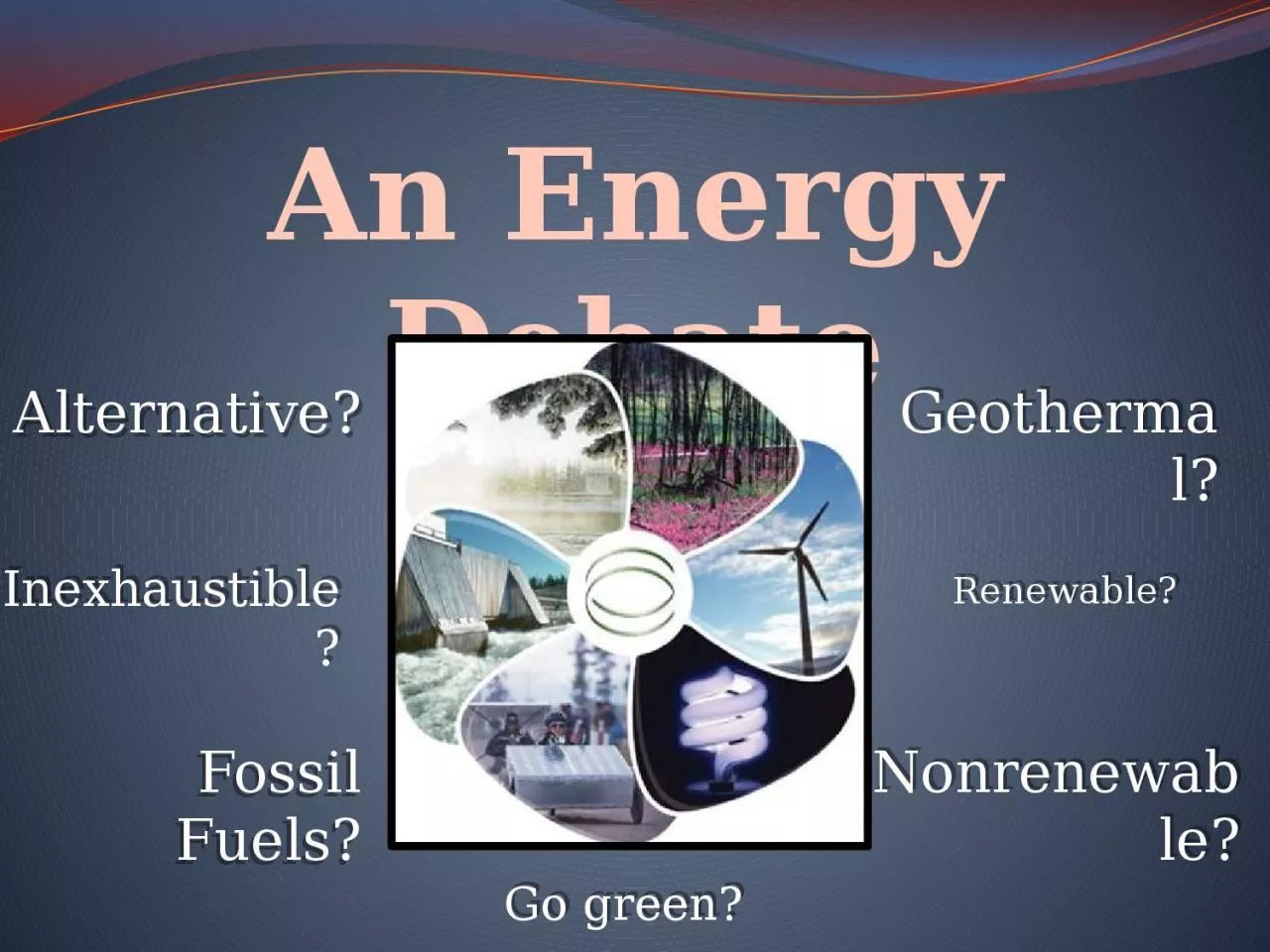PPT-Alternative? An Energy Debate
Author : ethlyn | Published Date : 2023-10-30
Renewable Inexhaustible Nonrenewable Fossil Fuels Go green Geothermal Current Sources of Energy Can you explain what the most common source of energy is in the
Presentation Embed Code
Download Presentation
Download Presentation The PPT/PDF document "Alternative? An Energy Debate" is the property of its rightful owner. Permission is granted to download and print the materials on this website for personal, non-commercial use only, and to display it on your personal computer provided you do not modify the materials and that you retain all copyright notices contained in the materials. By downloading content from our website, you accept the terms of this agreement.
Alternative? An Energy Debate: Transcript
Download Rules Of Document
"Alternative? An Energy Debate"The content belongs to its owner. You may download and print it for personal use, without modification, and keep all copyright notices. By downloading, you agree to these terms.
Related Documents














